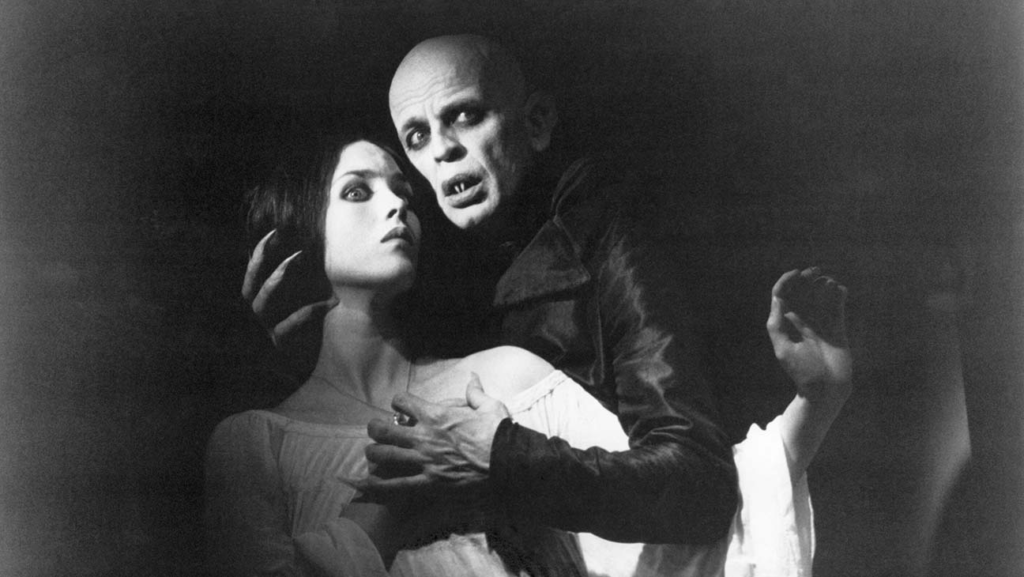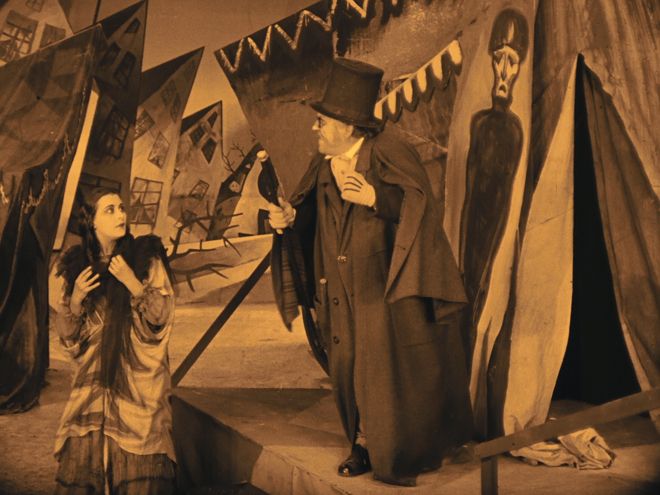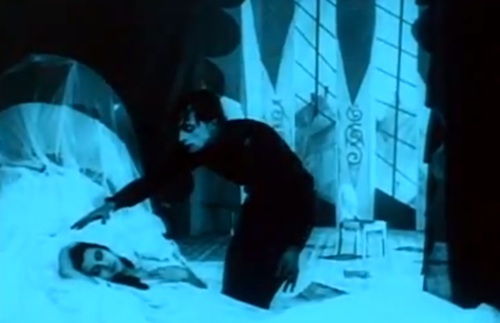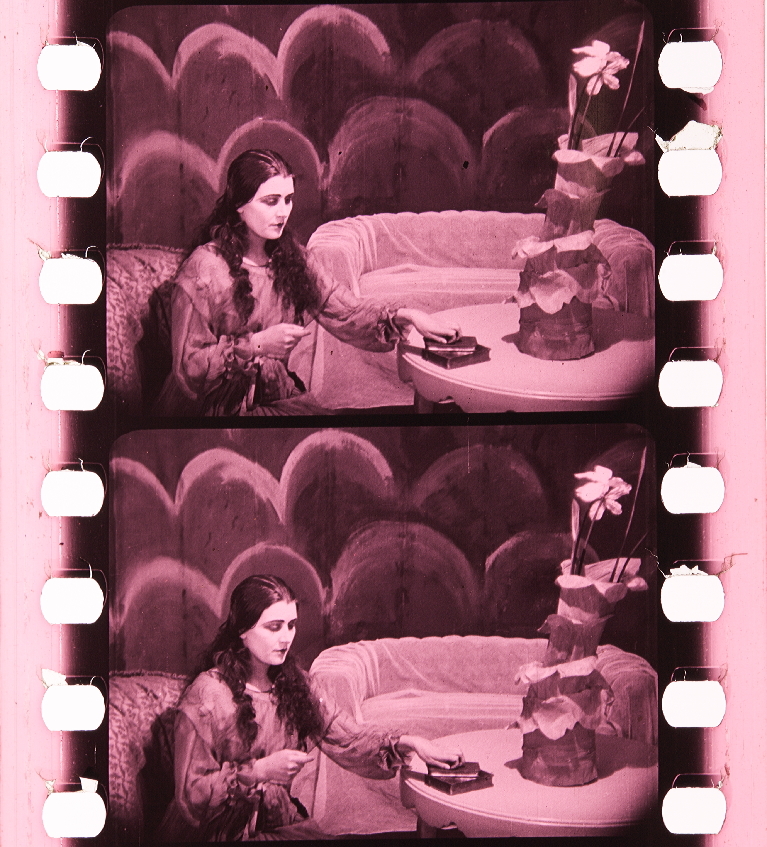Vampire Rules: Nosferatu

Nosferatu: Derivation from the Slavic Nesuferitu; defined as insufferable One
Greek word: Nosphoros – disease-bearing
The etymology indicates a common Indo-European root word. Possibly pre-historic in origin
Something that was whispered in hushed tones around Pleistocene campfires.
Nosferatu is the oldest surviving movie based on Bram Stoker’s Dracula. There may or may not have been a Russian Dracula film made in 1920, although it’s possible that that movie only got as far as an announcement. No known copy exists today.
There was also a Hungarian film shot the year before Nosferatu, Drakula Halála The plot was a ridiculous melodrama about a former asylum inmate having a dream about her old music teacher who becomes Dracula. It was in no way shape or form a screen adaptation of Stoker’s novel. The film is now lost frankly will never be missed.
Nosferatu was made 102 years ago. The producer, Alban Grau, spent every dime he had left throwing a lavish premiere for it in Berlin which appears to have been the cause of both its downfall and its salvation.
Bram Stoker’s impoverished widow heard about the premier, knew she had NEVER cleared the rights for it, and figured that since the Germans had thrown that big of a shin-dig they had money to burn. She filed legal action against Prana Films. Basically hoping for some KHOMA* money to come her way. Problem; Prana Films had literally nothing but the finished film as an asset. Since they hadn’t managed to get a distribution deal, Alban Grau did the only thing he could, he declared bankruptcy. When Florence Stoker discovered there was no money to come her way she seized ownership of the film and then rather stupidly ordered all copies of it destroyed.
It’s a sad truth that more films from the 1920s have been lost than preserved. Filmmaking was a young art and sadly there was a youth’s attitude toward preparing for the future. The early film adventures of Charlie Chan are lost to posterity. Cecil B. Demille’s epic Noah’s Ark, a film where extras were actually drowned, survives in only a few fragments.** The entire body of prewar Japanese films is gone. The vast majority of Conrad Veidt and F.W. Mureau’s collaborations are lost. Count Cagliostro, Doctor Jekyll and Mister Hyde, Satan; performances film scholars would give their teeth to see, vanished without a trace.
Mostly because those early films were pretty easy to lose. The acetate would degrade unless kept in specific conditions. It was also incredibly flammable. Which makes preservation particularly difficult in a firestorm.
However, nothing makes a person want to look at something more than a sign that says FORBIDDEN. Since Florence Stoker hung a big one on Nosferatu the people with unauthorized copies took great care in their preservation.
It also gave the film something of a mythos.
“I heard that at one point there was only one copy left!”
“Wasn’t Nosferatu the picture that made everyone who ever saw it go insane?”
“Didn’t that one have some kind of secret Nazi connection to it?”
The answers to those questions are:
- No.
- You’re thinking of Georges Méliès “La Rage du Démon.” That was only one time. And it was really more of a riot than actual insanity.
- Urr… Not precisely.
There is one scene in Nosferatu where the vampire sends his version of Renfield a letter that consists entirely of occultist glyphs and runes. And yes some of those were famously adopted by the NASDP. The Hakenkreuz, Siegrune, and a few other occult glyph favorites of the spacier wing of the SS were in the Renfield Letter (although the swastika hooks faced in the proper direction in the movie).
Occultism was huge in post-WWI Germany. It was a favorite of PTSD-drenched veterans, particularly those that had become addicted to opiates during hospital stays. Honestly, I’m drastically oversimplifying the cause but believe me the result was huge. It was loaded with the bizarre bullshit that Madame Blavatsky (nee Hahn von Rottenstern) had been making up and pretending was the secret history of the hidden world, Occult Truths, and something-something Atlantis. Were there actual Nazis associated with the production? Yeah, probably, it was post-war Germany.
However, Alban Grau the founder of Prana Films was not one of them. He wasn’t Jewish but he did have occult opinions that Himmler viewed as heretical, so he hot-footed it out of Germany in 1933.
Getting back to Nosferatu itself.
Grau created Nosferatu as an expressionist film conveying occultist beliefs to the audience. In fact that had been his dream for Prana Films. It was supposed to be a studio producing a series of occult films.
Consequently, Nosferatu is not exactly a faithful adaptation of Bram Stoker’s work.
The Vampire Rules: The Count is not an elegant gentleman, he is an animated corpse that feeds on blood and brings plague and pestilence with him wherever he goes. This is very much in keeping with genuine Eastern European peasant lore as documented in “Dissertations Upon the Apparitions of Angels, Daemons, and Ghosts, and Concerning the Vampires of Hungary, Bohemia, Moravia, and Silesia” Count Orlock can not create vampires himself, only the demon Belial who created him can do that. The only thing Orlock can do is bring death wherever he goes. As this is a film based on “occult truths” science and technology prove useless against the vampire. Christian icons do nothing to stop him. The only thing that can do that is the most powerful of primitive offerings. The willing human sacrifice.
Something that modern audiences don’t really get about the silent movies is that they weren’t exactly a brand-new form of entertainment. They were the descendant of the “Magic Lantern” shows of the 1700s and 1800s. The visual presentations were only part of the package the audience was meant to be entertained by. Some of the early silent movies had audiences singing along with them when prompted to. There were pieces composed for full symphonies that were meant to be played while the movie was shown.
Nosferatu did indeed have one of these musical accompaniments specifically written for it. They were always meant to be scalable in terms of the size of the orchestra, most venues would have a more modest number of instruments, going all the way down to one humble piano.
Sadly, Nosferatu’s concerto only survives in fragments. Contemporary releases on VHS and DVD claiming to be using the original score have only incorporated the surviving fragments into new compositions. Well, it’s better than nothing.
Another thing that people frequently note is the odd coloring of these old “Black and White” films.

Most people think that it’s just a by-product of the film deteriorating over time. It’s not. This is how these films were always meant to be shown.
The tinting was deliberate. Sometimes it was meant to indicate the time of day.
Yellow told the audience that this was daytime.

Blue indicated that the scene was taking place at night.

Or the tint could be meant to express a tone.

1920s audiences knew what the color coding meant but contemporary audiences tend to be lost on the subject.
It hasn’t been possible to see how Nosferatu was originally seen in the 1920s because restoration efforts frequently ablated the tinting to render the film into a proper “black and white” presentation. The restorers being totally unaware they were in fact damaging the film.
Like I said, it hasn’t been possible to see it as it was meant to be seen… Until now.
The guys at Midnight’s Edge have gone all out to create their ultimate edition of Nosferatu. A faithful presentation as near to a mint original as is possible without an actual time machine. The tinting, the lettering of the title cards, and as much of the music as possible have been cleaned up and resorted.
Here is the result of their herculean labor.
Nosferatu: A Symphony of Horrors
Watch. It.
*KHOMA is banker jargon for a kind of loan given to women who want to start up some kind of laughably impractical business, but whose husband is rich enough he can cover the loan when the business goes tits up. The husband wants the loan for purposes of KHOMA – Keep Her Off My Ass.
**John Wayne was one of the extras. One of the ones who could swim obviously.

